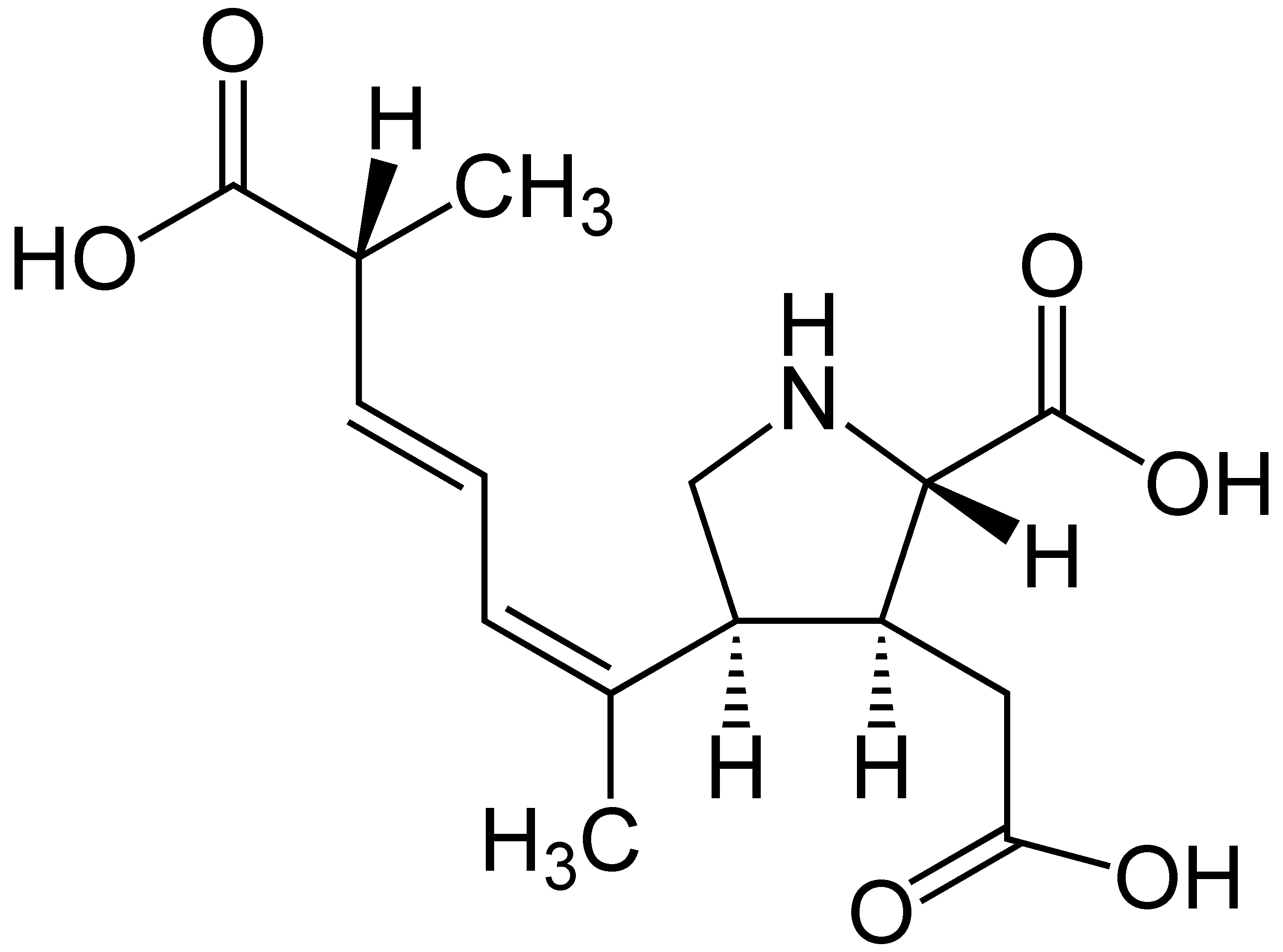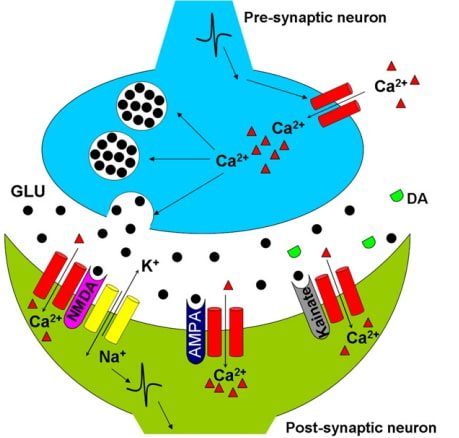Canada, 1987. A mysterious disease affects more than 143 people, 4 of whom die. But what do all these people have in common? The answer is the consumption of shellfish contaminated with d. acid, which came from a farm located on the coast of Prince Edward Island.
Scientists later named this disease Amnesic Shellfish Poisoning (ASP) because of the condition of amnesia and short-term memory loss that this substance can cause.
Domoic acid, the main suspect
Domoic acid (abbreviated as DOM) is an amino acid belonging to the kanoid class, a group of neurologically active amino acids. DOM is an excitatory amino acid, an analogue of glutamate, thus acting as an antagonist of glutamate receptors in the central nervous system.

This amino acid is produced by some diatoms and red algae. DOM was first identified within a red alga, Chondria armata. On the other hand, major producers include diatoms of the genus Pseudo-nitzschia, specifically P. multiseries, P. pseudodelicatissima, and P. australis.
Diatoms belonging to the genus Pseudo-nitzschia are widely distributed in all marine environments, from the warmest to the coldest.

but…
However, it is important to consider that domoic acid is not always produced in the same quantities. Its production tends to increase in response to a stressful stimulus, such as a change in temperature. A warm and temperate climate is associated with a higher production of domoic acid. However, this is not true for all species; some diatom species (such as P. seriata) have adapted to produce greater amounts of domoic acid even in colder environments.
Diatoms, fish, and man
Once we have identified the producers of domoic acid, we need to take it a step further. Domoic acid can accumulate in a wide variety of fish and shellfish. DOM-producing algae can enter the food chain and contaminate crustaceans, molluscs, and some types of fish. In particular, the organisms most implicated are mussels (Mytilus edulis), clams (Cerastoderma edule), crabs (Cancer magister), shellfish (Siliqua patula), and scallops (Pecten maximus). Accumulation of domoic acid is primarily due to either phytoplankton filtration or ingestion of the previously contaminated organisms.
How does it act?
Domoic acid is structurally similar to glutamate, one of the main excitatory neurotransmitters present in the central nervous system. Because of this similarity, DOM can interact with ionotropic glutamate receptors (GluRs) present on nerve cell terminals.
These receptors are critical, as they mediate excitatory stimulus transmission and are involved in synaptic plasticity critical for memory and learning processes. Neurodegeneration, neurotoxicity, seizures, and apoptosis are conditions that occur following excessive stimulation of these receptors.

Ionotropic glutamate receptors are divided into 3 subtypes:
- AMPA
- Kainato
- NMDA
The binding of DOM to these receptors determines the entry of calcium and sodium (mainly in the case of NMDA) and potassium (AMPA and Kainate) inside the nerve cell. All this also promotes the release of glutamate at the synapse. Researchers have observed that the high amount of Calcium can cause the disruption of calcium-dependent cascades and determine an imbalance of cellular ionic homeostasis, resulting in neuronal death and neurotoxicity. This is particularly evident in some regions of the hippocampus, that area of the brain associated with functional memory and in which Kainate receptors are particularly abundant.
Signs, Symptoms, and Experiments
Although the toxicology is not completely known, we know that domoic acid is poorly absorbed in the intestine, hardly penetrates the blood-brain barrier, and has a very short half-life. However, some conditions such as age (especially during development) and the presence of diseases (kidney, liver) are possible risk factors that could predispose the individual to possible intoxication.
Many of the studies concerning the effects of domoic acid have been carried out on mice. The administration of DOM resulted in hypoactivity, sedation, rigidity, loss of posture control, tremors, convulsions, respiratory problems, and, at higher doses, death. The link with the hippocampus was instead evidenced by the inability of mice, following DOM administration, to navigate mazes and to remember how to navigate them.
Studies in nonhuman primates then provided further details regarding signs and symptoms associated with DOM. Indeed, administration of domoic acid resulted in hypothermia, acute pulmonary edema, vomiting, and death. Domoic acid was also able to cause neuronal degeneration and necrosis in some areas of the brain, in particular in regions such as the hippocampus, the hypothalamus, and the area postrema (involved in the regulation and control of vomiting).
Some curiosities
Although domoic acid is particularly dangerous for humans, the events associated with its consumption are very sporadic. Among animals, however, those who suffer most from domoic acid poisoning are sea lions, as well as sperm whales and dolphins.
Even birds are not completely exempt: the famous director Alfred Hitchcock, following a particular event that occurred in 1961, decided to direct the film “The Birds”, based on a story by the writer Daphne du Maurier. The protagonists of the film are the birds, which behave abnormally, spreading terror among people…probably because of domoic acid poisoning!

Original article: Vongole, cozze e avvelenamento amnesico da molluschi – Written and translated by: Ilaria Salvatori
Bibliography
- Six domoic acid related compounds from the red alga, Chondria armata , and domoic acid biosynthesis by the diatom, Pseudo-nitzschia multiseries | Scientific Reports (nature.com)
- Ionotropic glutamate receptor – Wikipedia
- Amnesic shellfish poison – PubMed (nih.gov)
- Domoic acid and human exposure risks: a review – PubMed (nih.gov)
- Acido domoico – Wikipedia
- Pseudo-nitzschia – Wikipedia
- Gli uccelli – Wikipedia